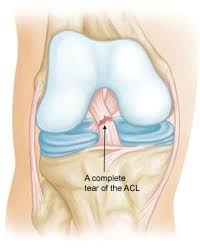Anterior Cruciate Ligament (ACL) tears are among the most common and serious knee injuries, particularly in sports and physically demanding activities. The ACL is a critical ligament that helps stabilise the knee joint, and its injury can significantly affect mobility, athletic performance, and quality of life.
In this article, we’ll cover the causes, symptoms, diagnosis, treatment options, risk factors, prevention strategies, and recovery timeline for ACL tears.
What Is the ACL?
The Anterior Cruciate Ligament (ACL) is one of four main ligaments in the knee. It connects the thighbone (femur) to the shinbone (tibia) and helps stabilise the knee, particularly during rotation or sudden changes in direction.
Common Causes of ACL Tears
ACL injuries typically occur during activities that involve sudden stress on the knee. Common causes include:
-
Sudden direction changes (e.g., pivoting or cutting)
-
Improper landings from jumps
-
Abrupt stops or deceleration during running
-
Direct impact to the knee (e.g., tackles in football)
-
Overextension or hyperextension of the knee joint
These injuries are especially common in high-impact sports like football, basketball, skiing, gymnastics, and rugby.
Symptoms of an ACL Tear
Typical signs and symptoms include:
-
A loud "pop" at the time of injury
-
Severe pain and inability to continue activity
-
Rapid swelling of the knee
-
Instability or a sensation of the knee "giving way"
-
Loss of range of motion
If you suspect an ACL tear, it’s important to seek prompt medical evaluation to prevent further damage.
Diagnosis
Diagnosis usually includes:
-
Physical examination – assessing knee stability and pain response
-
Imaging tests – MRI scans confirm the extent of ligament damage and identify other associated injuries like meniscus tears
Risk Factors
Several factors may increase the likelihood of an ACL injury:
-
Participation in high-risk sports (e.g., football, basketball, skiing)
-
Female sex – due to anatomical and hormonal differences
-
Poor conditioning – lack of strength and flexibility
-
Playing on artificial turf
-
Inadequate footwear or equipment
Treatment Options
Treatment depends on the severity of the tear and the patient’s activity level. Options include:
Non-Surgical Treatment
-
Recommended for partial tears or low-demand individuals
-
May include:
-
Physiotherapy
-
Bracing
-
Activity modification
-
Surgical Treatment
-
Often required for complete tears or active individuals
-
Involves ACL reconstruction surgery using a tendon graft
-
Post-operative rehabilitation is critical for successful recovery
Recovery Timeline
-
Non-surgical rehab may take 2–3 months for return to light activity
-
Surgical recovery typically spans 6–12 months, depending on:
-
Graft healing
-
Muscle strength
-
Range of motion
-
Adherence to physiotherapy
-
Most athletes return to sport between 9 and 12 months post-surgery.
Prevention Strategies
You can reduce your risk of ACL injury by:
-
Neuromuscular training: Strength, balance, and movement control programmes
-
Correct technique: Proper landing, pivoting, and cutting mechanics
-
Strengthening exercises: Focus on the hamstrings and quadriceps
-
Warm-up routines: Prepare the muscles and joints before physical activity
When to See a Specialist
If you experience knee instability, pain, or swelling after a sports injury or awkward movement, consult an orthopaedic specialist. Prompt diagnosis and appropriate treatment can prevent further joint damage and improve long-term outcomes.
Find a Specialist Near You
At RatedDoctor.com, we connect you with leading orthopaedic surgeons and sports medicine experts across the UK. Whether you’re exploring non-surgical treatment or considering ACL reconstruction, you’ll find trusted specialists here to guide your recovery





